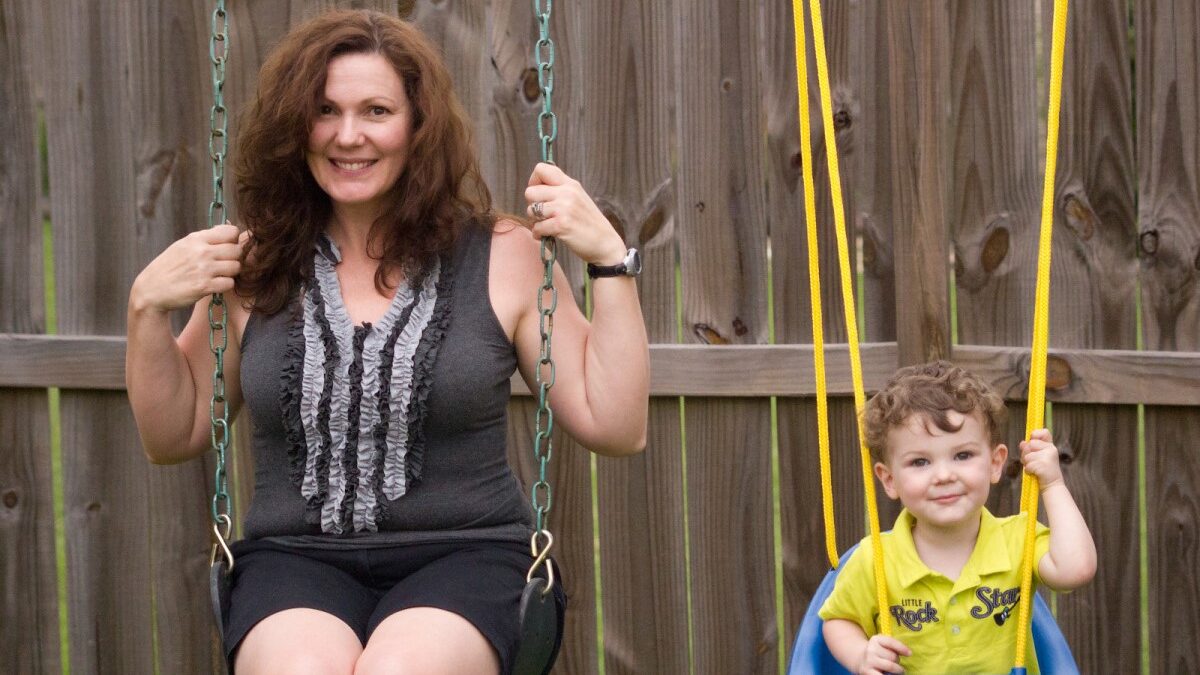
Families in developed countries are having fewer children and women are putting off having kids until later in life, bringing America’s fertility rate to an all-time low. If you’re among the many U.S. couples intimidated by the costs of raising a family or hesitant about whether you can have another baby, you can worry a little less. The cost of raising a child might not be as high as you think.
1. Insurance Plans Differ on Maternity Coverage
The cost of childbirth can be intimidating to prospective parents, especially since medical expenses are opaque and depend on a number of factors. With employer-provided insurance, average out-of-pocket costs for vaginal delivery were $2,244 (12 percent of the total cost), and costs for C-section delivery were $2,669 (10 percent of the total cost) in 2013, according to a study by Truven Health Analytics.
That data is consistent with the rule of thumb that insurance typically covers about 90 percent of the cost of a hospital birth. Since passage of the Affordable Care Act, all individual plans and employer-based insurance plans must offer maternity benefits. If you’re covered by Medicaid, as are nearly half of all U.S. births, your out-of-pocket costs will be zero, or close to it.
For prospective parents who don’t use Medicaid, insurance plans are not all equally cost-effective in the long run. Forecasting your expenses can help determine what plan is most cost-effective for your family. Before our first child, we settled on a health savings account (HSA) plan. Although initial birth costs were higher (around $4,500) and deductibles and copays are higher, we’ve more than made up the difference through lower premiums in the 16 months since her birth.
Out-of-pocket costs might be less than you’d expect, since HSAs can negotiate set rates with providers that are lower than the “sticker” price. It’s important to forecast costs and make a decision based on as accurate an assessment as possible, though. An HSA won’t be right for every family, but it’s worth looking into as a cost-effective way of paying for family health expenses.
But delivery costs are only the beginning of nearly two decades of expenses, and health care costs only make up about 9 percent of them, by government estimates. How much does raising a kid typically cost, and can you reasonably pay less than that to raise healthy, well-educated, and well-adjusted kids? Yes.
2. ‘Average’ Cost of Child-Rearing Estimates Are Often Silly
The U.S. Census Bureau, under contract with the Bureau of Labor Statistics, administers an annual survey called the Consumer Expenditure Survey. According to the U.S. Department of Agriculture, which published the survey, it’s “the most comprehensive source of information on household expenditures available at the national level,” surveying 23,297 married-couple households and 7,030 single-parent households.
The final sum has been widely touted as a steep price: the estimated cost to rear a middle-income child from birth through age 17 is $233,610 (in 2015 dollars), for a middle-income ($59,200-$107,400), married couple with two kids.
For families with income below $59,200, costs remained relatively constant at just below $10,000 a year from birth to age 17. For the middle-income group, costs hovered around $13,000. And for families with income over $107,400, expenditures ballooned to over $20,000 a year. These costs comprise approximately 27 percent, 16 percent, and 11 percent of the income groups’ total budget expenditures, respectively.

But we’ve got reasons to question whether the USDA’s average should be used as a benchmark for pricing out middle-class child-rearing, as I’ll explain in detail below.
3. Middle Income Doesn’t Mean ‘Middle Class’
Now, most of the press covering “the cost of raising a child” cites this “middle-income” figure of $233,610. This might lead one to believe you should expect to pay about this number if you want your kids to have a “middle class” lifestyle.
But that’s not quite right. The range defined in the USDA report as “middle-income” is $59,200-$107,400. That’s quite a range for “middle income,” and it might not be the range you think of when you think “middle class.” For a married couple with two children with income under $59,200, the total cost of raising a child was approximately $164,135. There’s good reason to believe this is a more reasonable estimate for how much you might spend on raising each kid.
According to Pew Research Center, just over half of Americans (51 percent) are in “the middle class,” defined as two-thirds to double the median U.S. household income. That equates to roughly $42,000-$125,000 in 2014, an even bigger range than the USDA’s.
However, Pew’s “middle class” calculator adjusts the income threshold deemed necessary for a middle-class standard of living based on area of the country. For instance, according to the calculator, a family of four with an income of $46,000 in Yakima, Washington is considered “middle income,” but it takes about $52,000 for a four-person household to be middle income in the Seattle metropolitan area.
Additionally, this is before-tax income. The federal child tax credit was greater than the cost of raising our toddler over the past year. Last year’s tax reform raised the credit from $1,000 to $2,000 per qualifying child, with up to $1,400 being refundable. Then there’s the Earned Income Tax Credit, essentially a direct government payout to lower-income families. It is also weighted by dependents, as well as child-care and education credits.
It’s also important to note that “expenditures” as defined in the USDA report include spending via food stamps—that’s tax dollars, not earned income. Both the broad definition of expenditures to include taxpayer spending rather than personal spending, and the fact that these calculations are pre-tax, are important caveats in accurately understanding the cost of raising kids.
What constitutes a “middle class” lifestyle and the income necessary to live that lifestyle depend on where you live, in addition to your spending habits and tax benefits. It’s perfectly reasonable to consider families who bring in well under $59,000 as middle class, and their cost of raising a child from birth through 17, according to the report, is less than $170,000. That’s more than $60,000 less than the average cost for the middle-income group.
4. Having More Kids Reduces the Expense per Child
According to Pew Research Center, 41 percent of mothers surveyed in 2014 had two children, compared to mothers who had either three (24 percent) or four or more children (14 percent). It makes sense that most of the USDA’s calculations based on a two-child family would produce a “standard” cost. But they found that the cost per child lowers the more kids you have. Each additional child costs about 24 percent less than the “standard” child in a two-child household.
For middle-income, married-couple households with three children, the annual expense is roughly $30,000 for all three (assuming the older children are teenagers). About $10,000 per child puts spending for middle-income households just above spending per child for households making below the “middle income” benchmark of $59,200. Basically, “large” middle-income families appear to spend like they aren’t middle-income.
Does that mean children from larger middle-income families don’t have the same material quality of life as the typical two-child families in the same income bracket? Not necessarily. Having three or more kids is a bit like buying in bulk. It’s the same quality, but you get a better deal.
Having only one child, on the other hand, is like buying the smallest individual unit. Just over a fifth (22 percent) of mothers surveyed by Pew had only one child. On average, single-child families spent 27 percent more per child than two-child families do.
There are many reasons big families spend less and single-child families spend more. Take the initial investment in “baby gear,” for instance: swings, bouncers, jumpers, car seats, etc., can be recycled for multiple children. But if you’ve only got one child, you can’t distribute that cost among siblings.
You’ll also spend less on clothes through hand-me-downs, at least while the kids are younger and don’t complain about style. Turns out toddlers don’t really care if their shirt is a month or a decade old—and thrifty people can save on new clothing purchases through the secondhand market.
You’ll spend less on food, too, since larger families buy practically everything in bulk and cook in large batches. Leftovers actually get eaten. There’s less waste, and less eating out. Taking a big family out to dinner is kind of expensive; serving five at home is much cheaper than feeding three or four at a restaurant.
Parents in 2015 spent roughly $30,000 more over the course of child-rearing (adjusted for inflation) than parents did in 1960. That’s a 16 percent increase. Might the increase have something to do with the fact that families had more children in 1960 (something like 3.5), and therefore the cost per child was lower?
5. Parents Buy Much More House Than They Need
According to the report, “Housing accounted for the largest share across income groups, comprising 26 to 33 percent of total expenses.” Food (18 percent) and child care/education (16 percent) were the second- and third-largest expenditures.
According to the report, “Families in the urban Northeast had the highest child-rearing expenses, followed by similar families in the urban West and urban South.” Rural households and families in the urban Midwest spent the least on child-rearing.
The report assumed each child had his own bedroom, along with all the required furnishings such as dressers and beds. This is a “conservative estimate” according to the report, since it doesn’t account for the fact that, “some families pay more for housing to live in a community with preferred schools or other amenities for children,” and it doesn’t account for the additional cost of a bigger yard, playrooms, or other “child-specific furnishings.”
This might be a conservative estimate for how much parents spend on their children, but it’s not a conservative estimate for how much less they could be spending. Sharing bedrooms is perfectly reasonable. That means you can get by with a smaller house.
Also, families buying newer and bigger homes have inflated the cost of the average bedroom in the “additional bedroom approach,” since bedrooms are being built larger than in the past. Over the last couple of decades, the median size of a single-family home grew by 550 feet to 2,500 square feet. Some of this increase is due to the size of bedrooms, not just the quantity.
According to a 2013 survey of builders, the average size of a non-master bedroom in a new home is 481 square ft. For houses under 2,000 square feet total, it’s still a spacious 261 square foot average. That’s nearly four times bigger than the smallest “habitable” room of 70 feet, more than twice the size of the previous minimum of 120 feet (a guideline established by the International Residential Code for One and Two Family Dwellings).
6. Child-Care Costs Less When One Parent Stays Home
Dual income is a touchy subject, but the fact remains that someone has to mind the children while both parents are earning. According to the report, child care/education (for those with the expense) accounted for 16 percent of child-rearing expenses for families in the middle-income group. But that’s only calculated for families with the expense.
More than half of the surveyed families reported “no expenditure,” even though the category includes “books, fees, and supplies” for “private or public schools.” What does this mean? It means if you don’t pay for private education or use daycare, then you’ve cut your costs by roughly 16 percent. If you’re spending $12,730 a year per child, that’s an expense of $4,073 for two kids that families with stay-at-home parents aren’t paying.
To be fair, the report only lists the costs before taxes (so, before credits and deductions). The tax code does contain a child care credit. It’s worth up to 35 percent of up to $3,000 of care expenses for one dependent or $6,000 for two or more dependents. Middle-income parents are spending about $12,730 a year on raising kids between ages three and five, when child-care costs are largest (see the bar graph above).
The report doesn’t give the specific percentage for that age range, so I’ll estimate it at 20 percent, or $2,546 spent on child care per kid. The maximum credit for child-care costs for two kids ($5,092) would be about $1,782, meaning the average net cost for child care would be $3,310. The credit is only for care costs, though, not education. If you’re sending your child to preschool, although it may function as child care of sorts, it’s not going to qualify for the credit.
Although it’s not included in any of the USDA’s calculations, it’s also worth noting that overall transportation costs are likely lower for families with one stay-at-home parent, since that person isn’t commuting.
While many families would like to have one parent stay home, they may think losing an income is out of the question. Perhaps it is, but a penny saved is a penny earned. It might be the case that if you cut back here and there — opting for a smaller house and a cheaper vehicle you don’t have to make payments on, for example — you could make it work.
To a certain extent, it depends on how much you’re willing to sacrifice to afford one parent raising the kids full time. That’s not a comment on how much you love your children, just how much you value that particular family arrangement.
Financing child-rearing is complicated and messy, just like the rest of parenthood. But there are plenty of ways your costs could be lower than the average. And who really wants to be average? You probably don’t want to be an average parent; you want to be the best parent you can be. If you apply the same drive to how you handle the costs of raising kids—whether it’s one child or five, whether you have one earner or two—you’ll probably pay much less than the “average” of $233,610 per child.









